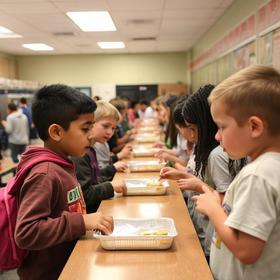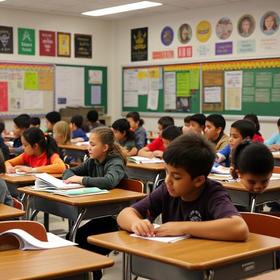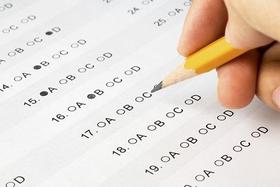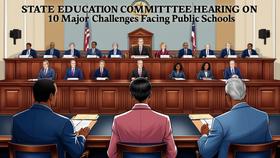Top Rankings
Basehor-Linwood School District ranks among the top 20% of public school district in Kansas for:
Category
Attribute
Overall Rank
Highest overall rank (Top 10%)
Math Proficiency
Highest math proficiency (Top 20%)
Reading/Language Arts Proficiency
Highest reading/language arts proficiency (Top 5%)
Science Proficiency
Highest science proficiency (Top 20%)
Community Size
Largest student body (number of students) (Top 1%)
For the 2025-26 school year, there are 4 public preschools serving 1,366 students in Basehor-Linwood School District. This district's average pre testing ranking is 10/10, which is in the top 10% of public pre schools in Kansas.
Public Preschools in Basehor-Linwood School District have an average math proficiency score of 58% (versus the Kansas public pre school average of 40%), and reading proficiency score of 58% (versus the 40% statewide average).
Minority enrollment is 20% of the student body (majority Hispanic), which is less than the Kansas public preschool average of 36% (majority Hispanic).
Overview
This School District
This State (KS)
# Schools
7 Schools
563 Schools
# Students
3,090 Students
175,366 Students
# Teachers
206 Teachers
12,675 Teachers
Student-Teacher Ratio
15:1
15:1
Student By Grade
District Rank
Basehor-Linwood School District, which is ranked within the top 10% of all 286 school districts in Kansas (based off of combined math and reading proficiency testing data) for the 2022-2023 school year.
The school district's graduation rate of 95% has increased from 87% over five school years.
Overall District Rank
#21 out of 286 school districts
(Top 10%)
(Top 10%)
Math Test Scores (% Proficient)
45%
31%
Reading/Language Arts Test Scores (% Proficient)
47%
32%
Science Test Scores (% Proficient)
42%
31%
Graduation Rate
(21-22)95%
89%
Students by Ethnicity:
Diversity Score
0.35
0.55
% American Indian
1%
1%
% Asian
1%
2%
% Hispanic
11%
20%
% Black
2%
6%
% White
80%
64%
% Hawaiian
n/a
n/a
% Two or more races
5%
7%
All Ethnic Groups
District Revenue and Spending
The revenue/student of $16,028 in this school district is less than the state median of $16,276. The school district revenue/student has declined by 7% over four school years.
The school district's spending/student of $14,518 is less than the state median of $17,192. The school district spending/student has declined by 7% over four school years.
Total Revenue
$50 MM
$7,774 MM
Spending
$45 MM
$8,211 MM
Revenue / Student
$16,028
$16,276
Spending / Student
$14,518
$17,192
Best Basehor-Linwood School District Public Preschools (2025-26)
School
(Math and Reading Proficiency)
(Math and Reading Proficiency)
Location
Quick Facts
Rank: #11.
Glenwood Ridge Elementary School
(Math: 65-69% | Reading: 63%)
Rank:
Rank:
10/
Top 5%10
17550 157th Terrace
Basehor, KS 66007
(913) 724-3536
Basehor, KS 66007
(913) 724-3536
Gr: PK-5 | 326 students Student-teacher ratio: 14:1 Minority enrollment: 24%
Rank: #22.
Linwood Elementary School
(Math: 55-59% | Reading: 60-69%)
Rank:
Rank:
10/
Top 10%10
14440 178th Street
Bonner Springs, KS 66012
(913) 724-2323
Bonner Springs, KS 66012
(913) 724-2323
Gr: PK-5 | 252 students Student-teacher ratio: 13:1 Minority enrollment: 17%
Rank: #33.
Basehor Elementary School
(Math: 55% | Reading: 54%)
Rank:
Rank:
10/
Top 10%10
15602 Leavenworth Rd
Basehor, KS 66007
(913) 724-1038
Basehor, KS 66007
(913) 724-1038
Gr: PK-5 | 526 students Student-teacher ratio: 15:1 Minority enrollment: 17%
Rank: #44.
Gray Hawk Elementary School
(Math: 50-54% | Reading: 50-54%)
Rank:
Rank:
9/
Top 20%10
16000 Garden Parkway
Basehor, KS 66007
(913) 724-1396
Basehor, KS 66007
(913) 724-1396
Gr: PK-5 | 262 students Student-teacher ratio: 11:1 Minority enrollment: 24%
Recent Articles

How Public Schools Support Students on Free / Reduced-Lunch Programs
Explore how U.S. public schools support students eligible for free or reduced-price lunch through nutrition, academic, and wraparound services in 2025.

Hidden Costs of Public Schools: Fees, Supplies & Extras
Explore the hidden costs in public schools鈥攆ees, supplies, extracurriculars鈥攁nd how parents can plan for them in 2025.

Public School Funding 2025: What Families Should Know
Essential insights on public school funding in 2025鈥攈ow it works, what鈥檚 changing, and what families should know to stay ahead.





